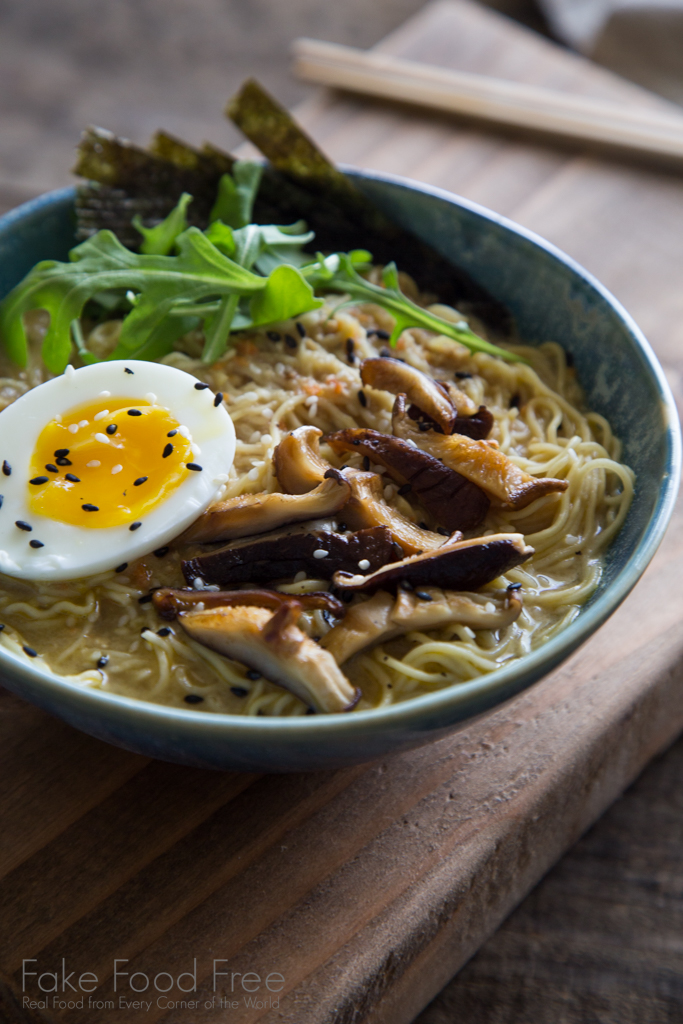
“You’re going to make ramen?” she said. The expression on her face made it impossible to hide her surprise.
“I’m going to try,” I said with a laugh, both at her genuine surprise and at the idea that I might actually be successful.
I was looking for kelp granules in a local Asian grocery and this kind woman stocking the shelves was trying to help me locate them. We never found them, but I left the market feeling the confidence that often results from a challenge.
Yes, I would make ramen.
I did make ramen.
I might even go back at some point and tell her about it.
If there is one thing I miss the most from the Bay Area it is the access to so many authentic Asian cuisines. The dim sum, the pho, the banh mi…and the ramen.
My first experience with ramen wasn’t in the Bay, though. It was in New York at Momofuku Noodle Bar. As you would guess, I got hooked and when the craving hit, we’d head out to one of the many places that served it in the East Bay.
There were quite a few. Yes, we enjoyed a few stops at the now wildly popular Ramen Shop in Oakland, but we found ourselves in places that were a bit less of a hassle much more often. Sobo Ramen in Oakland’s Chinatown was our favorite.
We’ve been without those spots for a while now, so I felt it was about time that I try to make it at home. I can find everything I need here in the Central Valley, including fresh noodles. Well, except those kelp granules. Amazon to the rescue.

So with the ingredients in hand, I turned to the book Simply Ramen by Amy Kimoto-Kahn. This book extensively explains ramen. It’s a must-have if you desire to get into the art of making it for yourself.
Ramen is a food built on layers of flavor – first you need your base, then your broth, and then come all the noodles and toppings. So the book starts with 3 bases that can later be made into stock. That’s what I’m going to share with you, this super tasty miso base.
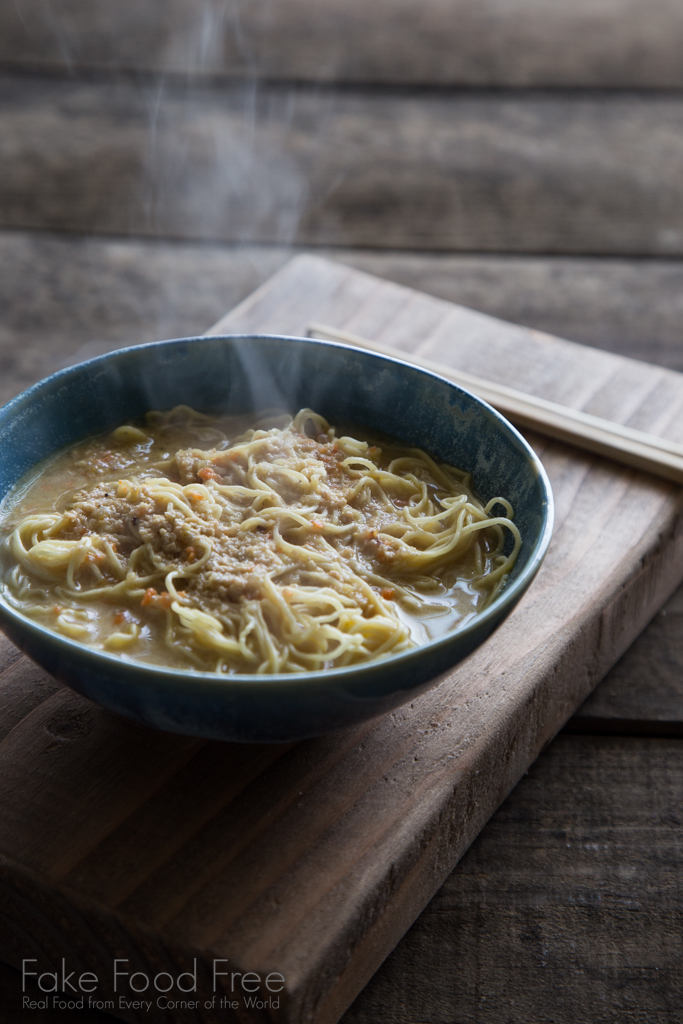
Once you have that you can go on to build a delicious bowl of ramen with essentially anything you choose. To build mine, I started very simply with some ingredients I had on hand. There are many recipes for beef, pork, chicken, and vegetarian ramen in the book. I plan to get a little more adventurous each time I make it. This time the rich base and broth was topped with sautéed shiitake mushrooms, arugula, nori, a 7-minute boiled egg, and black sesame seeds.
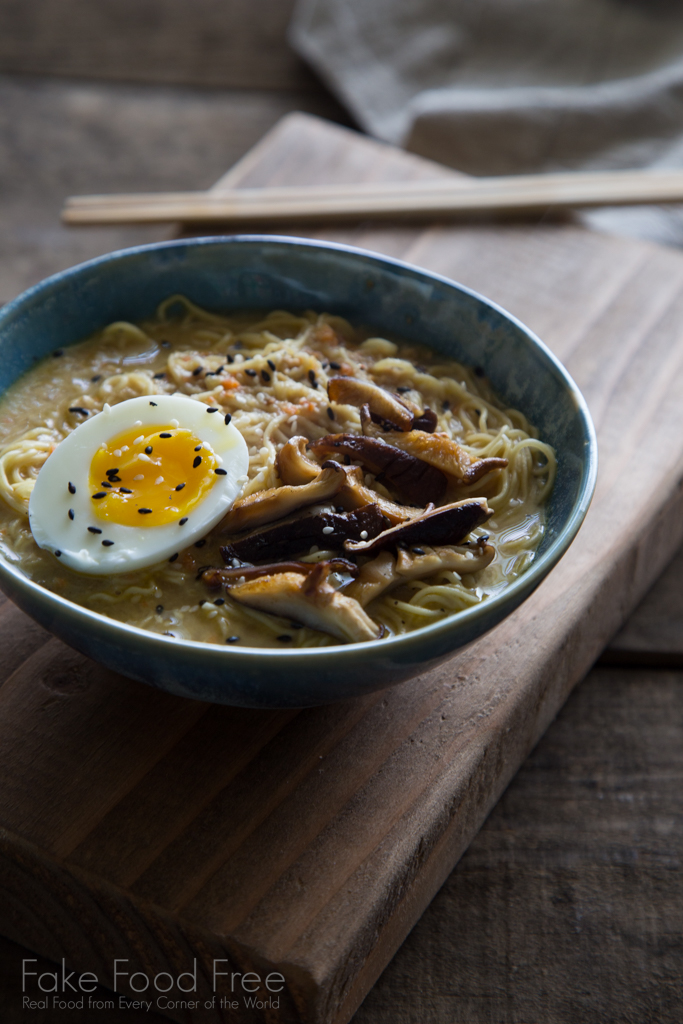
There is also a recipe for homemade ramen noodles in the book. I’ll be making those, too. I just happened to find a great Asian market here, though, and found some fresh so I grabbed those on my shopping trip.
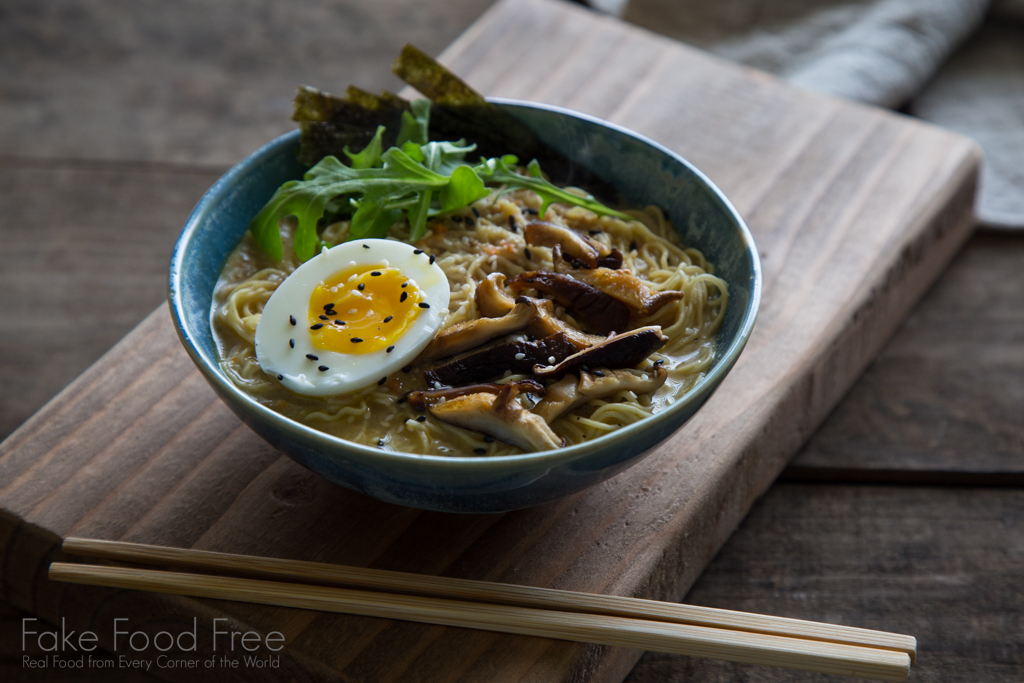
Regardless of whether you make everything from the book or pick and choose your own toppings, one thing is for sure — this good miso base is essential. One batch makes a lot and it freezes well, even better for having easy access to a hot bowl of ramen any time you crave it.
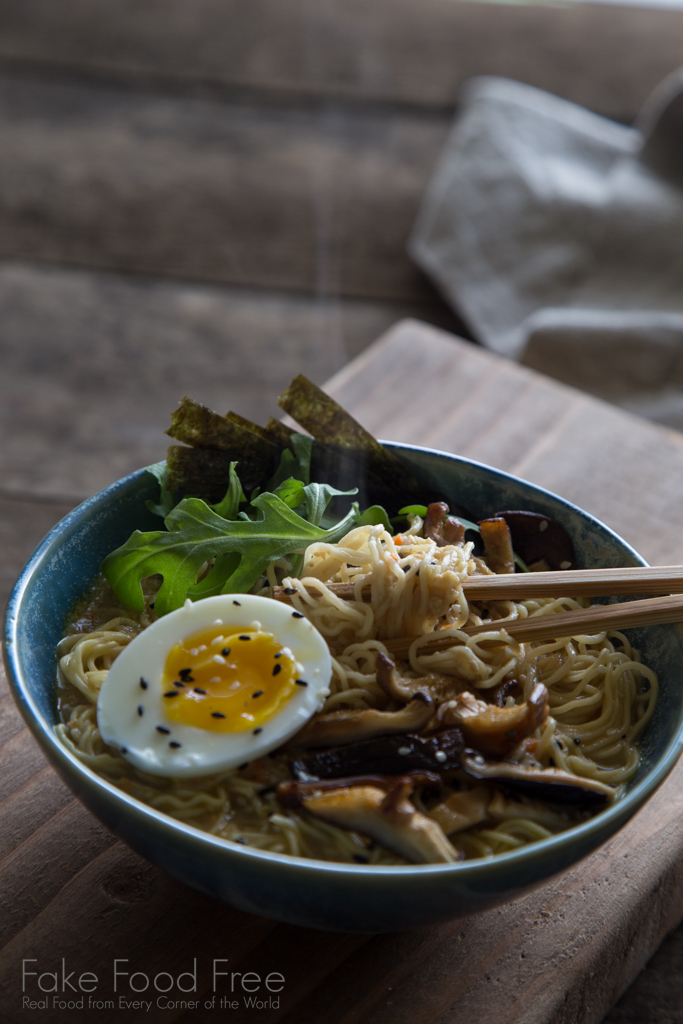
Miso Base
Reprinted with permission from Quarto Publishing Group
From the book:
Winters in Hokkaido in northern Japan are severe and the comfort and warmth of a good Miso Ramen have made it a daily staple. The quality of the miso makes all the difference in this recipe, so shop around and taste a variety of miso to find one that will add more depth.
Here, I’ve made a super flavorful Miso Base, or misodare, that can be enjoyed any time. Store it in the refrigerator, and when needed, you can make individual servings or enough to feed your whole family—this base offers the convenience of a one-person portion or a meal for many, all according to the base-to-stock ratio (3 tablespoons Miso Base to 1 cup chicken or vegetable stock). Whether you’re taking it to work for lunch or preparing a family meal, it will be worth the labor because once you make it, it’s practically instant to serve up later. The Miso Base can be refrigerated for up to a week or frozen for one month.
Serves up to 12
Prep time: 45 minutes
1 medium-sized carrot, peeled and cut into large dice
1⁄2 onion, peeled and cut into large dice
1⁄2 apple, cored, peeled and cut into large dice
1 celery stalk, cut into large dice
3 garlic cloves
1⁄2 cup (120 ml) bacon fat (optional but recommended)
2 tbsp sesame oil, divided
1 1⁄2 cups (340 g) ground pork
2 tsp fresh ground ginger
1 tsp sriracha
2 tbsp soy sauce
1 tsp kelp granules
1 tbsp apple cider vinegar
1 tsp salt
1 tbsp ground sesame seed paste (optional)
3⁄4 cup (175 ml) Shiro miso (white miso, which is lighter and sweeter)
3⁄4 cup (175 ml) Akamiso miso (red miso, which is darker and saltier)
Low-sodium chicken or vegetable stock—2 cups (475 ml) per serving based on the number of servings
Add the carrot, onion, apple, celery, and garlic to a food processor. Pulse into a fine chop. It is better to use a food processor but if you don’t have one, finely chop these ingredients by hand.
Add the bacon fat and 1 tablespoon sesame oil to a large skillet over medium-high heat. Add the finely chopped fruit and vegetables and cook until onions are translucent and apple is tender, stirring occasionally, for 10–12 minutes. When done, turn heat down to medium-low.
Add your ground pork to the cooked vegetable mixture. Cook for about 5 minutes until the meat is no longer pink. Stir in the ginger, sriracha, soy sauce, kelp granules, apple cider vinegar, and salt. Incorporate well.
Return the entire mixture to the food processor and pulse until pork is finely ground. It is better to use a food processor, but if you don’t have one, finely chop these ingredients by hand.
Add the sesame seed paste and miso to the ground pork mixture and mix well. It should have the consistency of a thick paste. Your base is done, so remove it from heat and set aside.
Bring the Miso Base and chicken or vegetable stock to a boil (depending on the number of people you are serving, use the ratio of 3 tablespoons Miso Base to 1 cup (235 ml) chicken or vegetable stock). Lower heat and let simmer until it’s ready to serve. Use about 2 cups (475 ml) soup per serving. Right before serving, crank the heat back up to boil the soup.
Pour 2 cups soup (475 ml) over each bowl of noodles. Top each bowl with desired toppings.


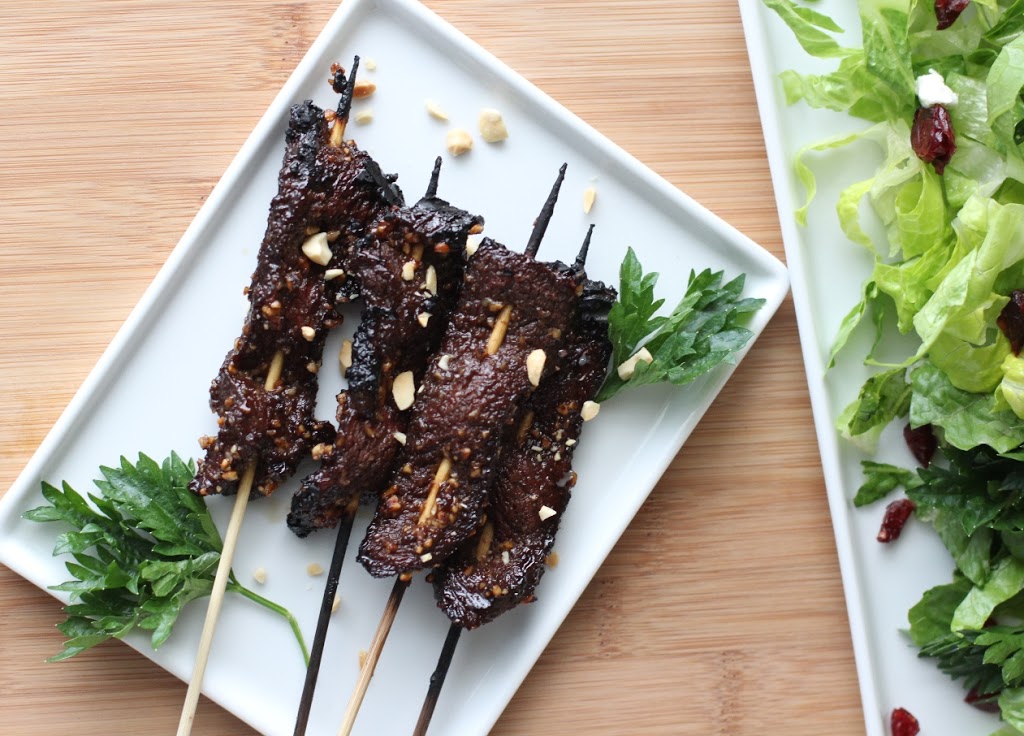
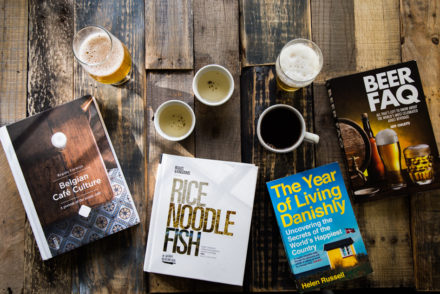


Wow! As much as I love ramen (and believe me, I eat it as much as I can) I’ve never known how to make it! I never would have guessed that it was made this way and always assumed it was more like a pork bone stock! Thanks for sharing this!
I never would have guessed all the ingredients in the base either, Tracey! It’s surprising…and delicious!
That actually looks really good. I say actually because when it comes to noodles, ramen is not the top of my list. :p
I’m sure you have plenty of experience with really tasty noodle dishes!